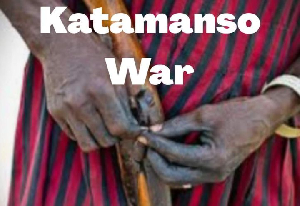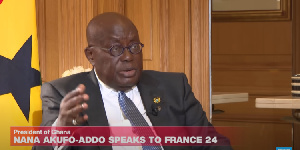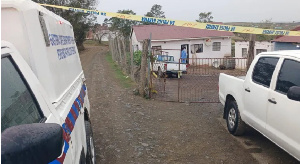Historic Account Blog of Friday, 14 October 2022
Source: Ras Tbc Ofoe
The Katamanso War (Battle of Dodowa)

The Katamanso War also known as Battle of Dodowa is historic battle fought on 7 August 1826 between the Ashanti’s and the Ga-Dangmes; the people of Accra (Ga), Dangme people of Prampram, Ningo and Ada.
The Ashanti’s invaded Fantiland and besiege the Fanti’s in order to seize the coastline and gain access to the slave and ammunition.
The valiant Accra people went to help the Fantes and the Denkyiras led by the Governor, in the Cape Coast Castle, beat back the Ashanti’ invasion which then prompted the Ashanti King Osei Tutu Kwame to declare war on the Ga.
After his return to Kumasi, he passed away and his nephew Osei Yaw Akoto became king of Ashanti in July 1824, he vowed to invade Akra (Accra) and punish the Ga people for the intervention during their cape coast invasion.
King Osei Yaw Akoto gathered an army of 40,000 and begun his march towards Akra (Accra) but intelligence information had reached Akra of the Ashanti army approaching the Ga-Dangme land.
An alliance of British, along with Ga, Fanti, Denkyira, Akwamu and Akyems faced the Asante at Katamanso the war zone. Notably, the Akyems were led in battle by Nana Afia Dokuaa, the Okyehene and only woman who was a ruler of a major state.
The combined forces of Prampram, Ningo, Ada and the riverside people just at the same time followed up the attack, and the position of the Asantes’ became critical.
King Osei Yaw, realising the danger, marched in defence with his body-guard, stood upon the royal stool, and drew the war-sword waving it between heaven and earth, as kings usually do in war, but the rebound was too strong, and he was wounded.
The King was made to swear an oath as the ‘ka ntam’ (Akan for swear), ‘na su’ (Akan for cry) = Corrupted into Katamanso.
There was a severe conflict between the king’s bodyguard and the forces under Opoku Fredefrede, in which the Asantes were beaten and greatly weakened; and on account of the defeat, the Asante General afterwards poisoned himself and died at Asafo.
King Osei Yaw escaped with a large number of his bodyguards through the right wing of his army but had lost sixty of his Generals, Chiefs and captains, the Accra people were left victorious on the battlefield.
The battle ended Asante suzerainty over many southern and coastal nations and contributed to the rise of British power and prestige on the coast.
Of all the battles fought by the Asantes since the formation of their kingdom, Katamanso war had proved to be the most fatal. It is said that the hair- style worn by the Asante women dubbed “Gyese Nkran”, (except Akra), corrupted as Densinkran, was introduced to mourn the Asante dead in the Katamanso war.
Many of the wives and children of Ashanti kingdom were captured and later brought to Ga-Dangme lands.
Hence today, one can see Akan household names among the Ga- Dangmes people. They were fully integrated into the Ga- Dangme tribes from the beginning.
Trading activities transpired smoothly on the coast with less fear of invasion as it used to be the case before the war ensued.
The war also led to the unity of Ga-Dangme.
The name Accra now became famous; their influence spread far and wide, and everyone looked up to them.
Their former enemies, Fantes, Akyems, Akwamus, and Akuapems bowed down to them, and their prestige was acknowledged even at Asante and Dahome.
They maintained lively traffic with foreign countries, and strangers came down to the Coast for commercial purposes.
Peace was not formalized until 1831, when the River Pra was accepted as the Southern Boundary of the Asante in a treaty concluded by Mr. George McLean.
Entertainment










